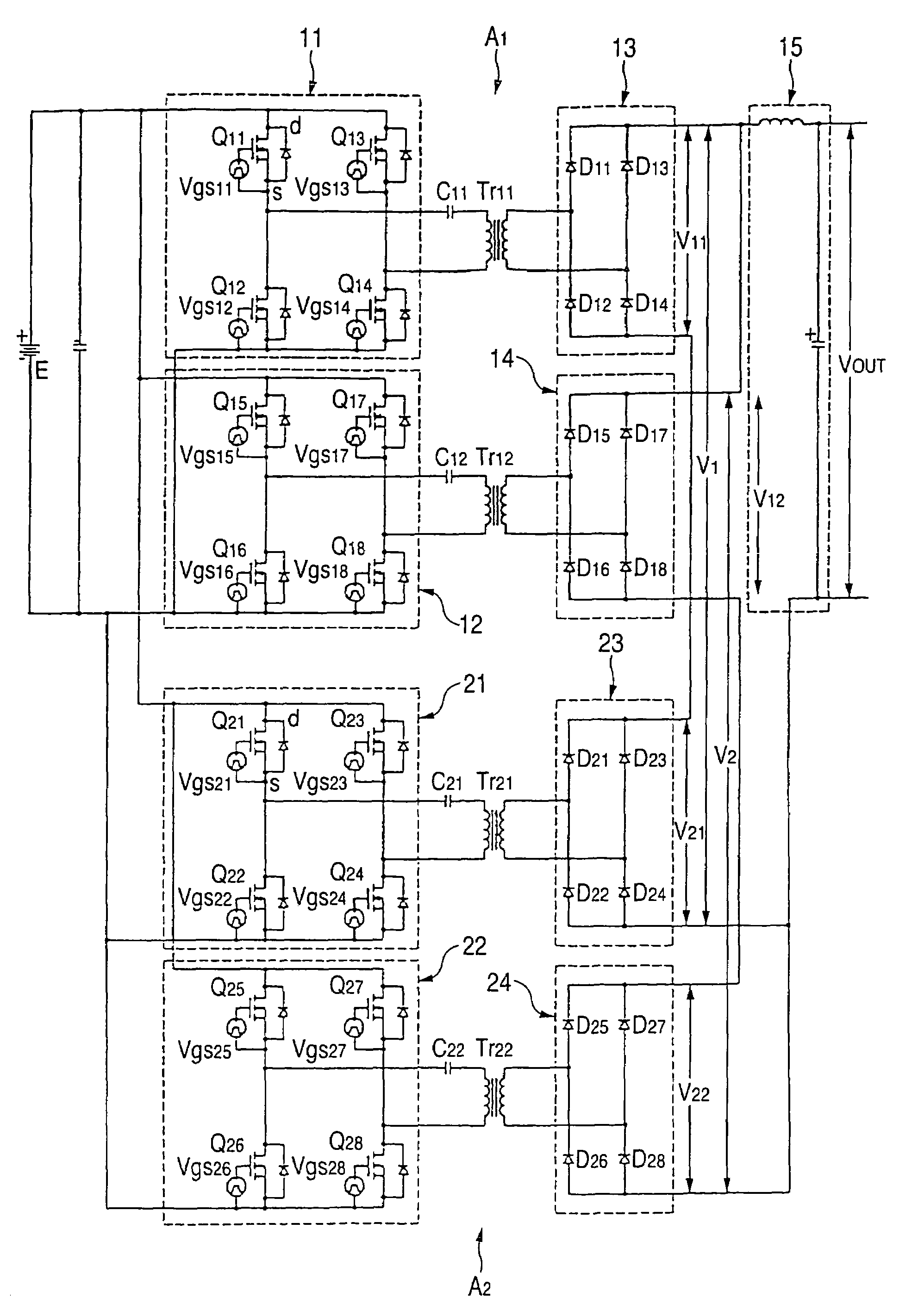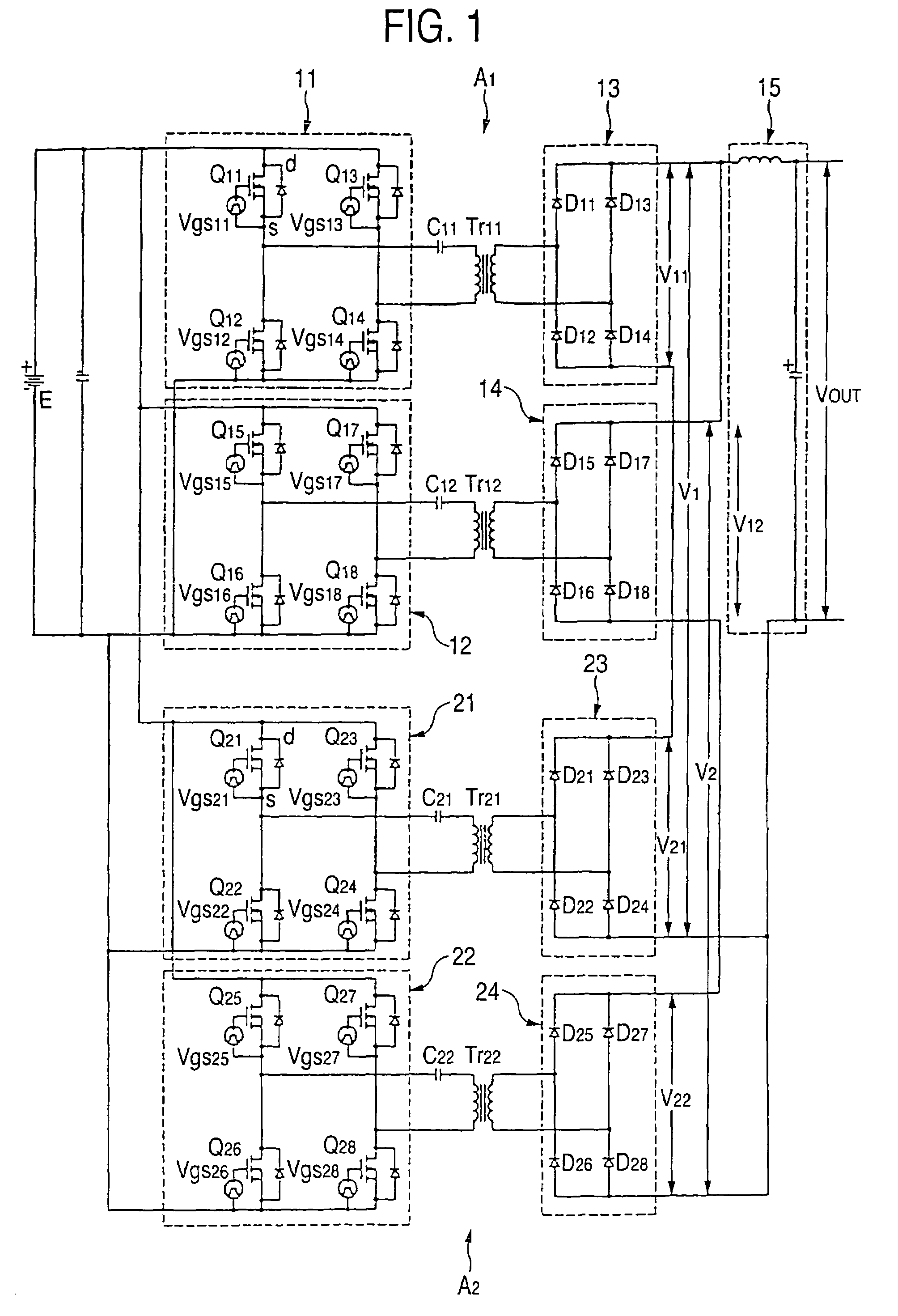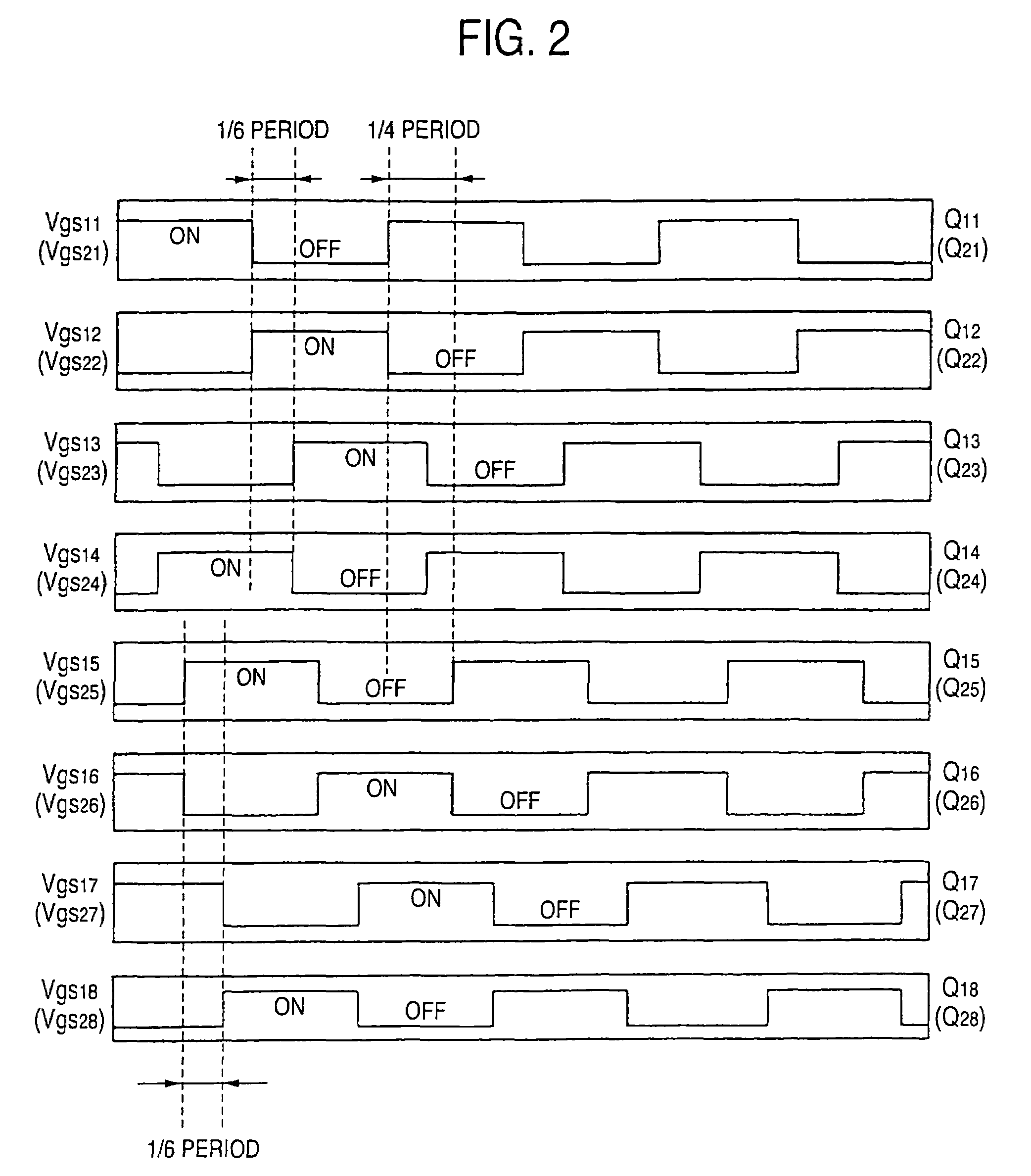DC-DC converter
a dc converter and converter technology, applied in the direction of electric variable regulation, process and machine control, instruments, etc., can solve the problems difficult to obtain things with good core characteristics, and difficult to cope with applications requiring a capacity smaller than its large capacity, etc., to achieve the effect of increasing the conversion capacity of dc converters
- Summary
- Abstract
- Description
- Claims
- Application Information
AI Technical Summary
Benefits of technology
Problems solved by technology
Method used
Image
Examples
Embodiment Construction
[0051]FIG. 1 is a circuit diagram of a DC—DC converter in an embodiment of the invention.
[0052]The DC—DC converter of this embodiment provides a circuit configuration in which n groups, for example, two groups of unitary units A1, A2 are connected in parallel with a DC power source E. Incidentally, three or more groups of unitary units can be provided.
[0053]One unitary unit A1 provides a following configuration. That is, a pair of conversion circuit parts 11, 12 converts a power source voltage of the DC power source E into an AC by two pairs of switching elements Q11, Q14, Q12, Q13 and Q15, Q18, Q16, Q17 (for example, MOS-FET, bipolar transistor or IGBT) of a full bridge configuration. The pair of conversion circuit parts 11, 12 are connected in parallel with the DC power source E. Rectification circuit parts 13, 14 made of two pairs of diodes D11, D14, D12, D13 and D15, D18, D16, D17 are provided to the output sides of each of the conversion circuit parts 11, 12 through transformer...
PUM
 Login to View More
Login to View More Abstract
Description
Claims
Application Information
 Login to View More
Login to View More - R&D
- Intellectual Property
- Life Sciences
- Materials
- Tech Scout
- Unparalleled Data Quality
- Higher Quality Content
- 60% Fewer Hallucinations
Browse by: Latest US Patents, China's latest patents, Technical Efficacy Thesaurus, Application Domain, Technology Topic, Popular Technical Reports.
© 2025 PatSnap. All rights reserved.Legal|Privacy policy|Modern Slavery Act Transparency Statement|Sitemap|About US| Contact US: help@patsnap.com



